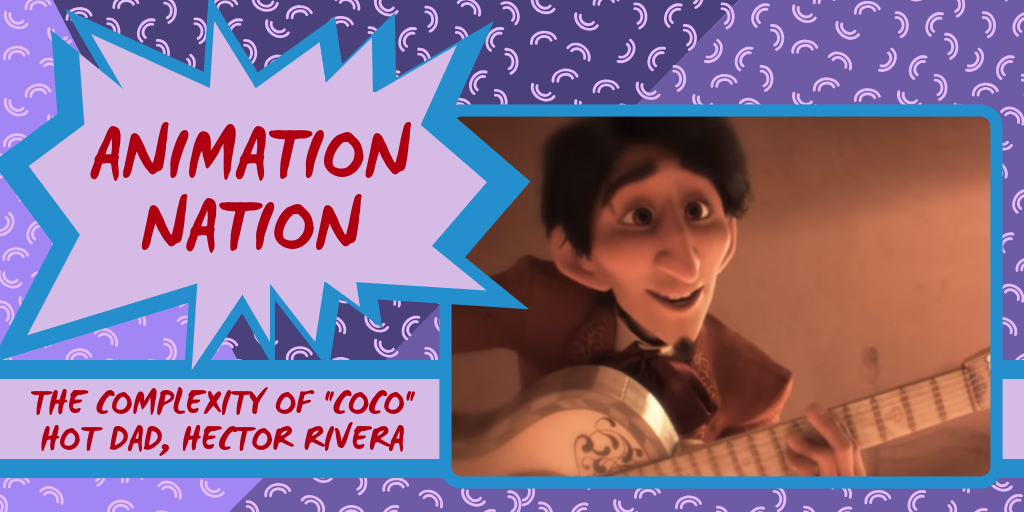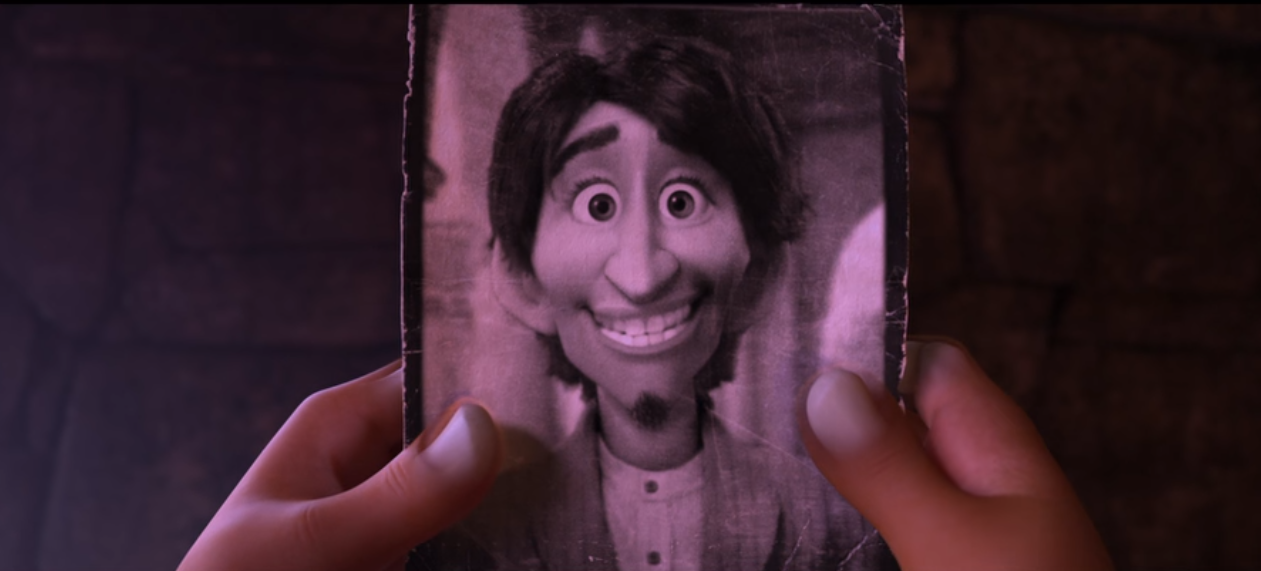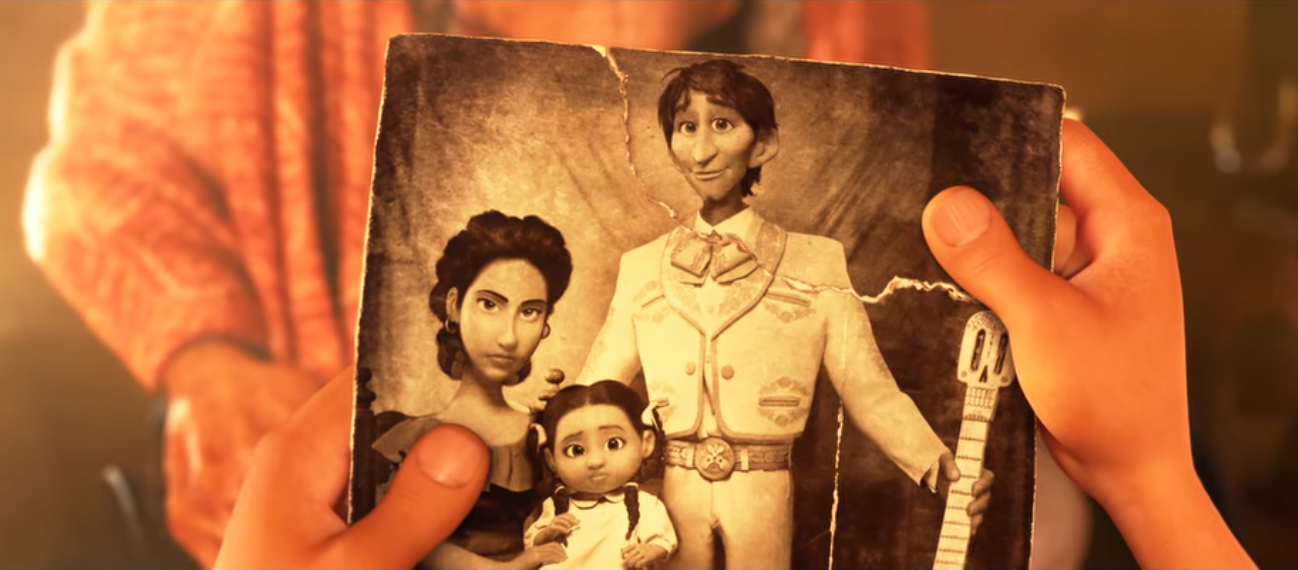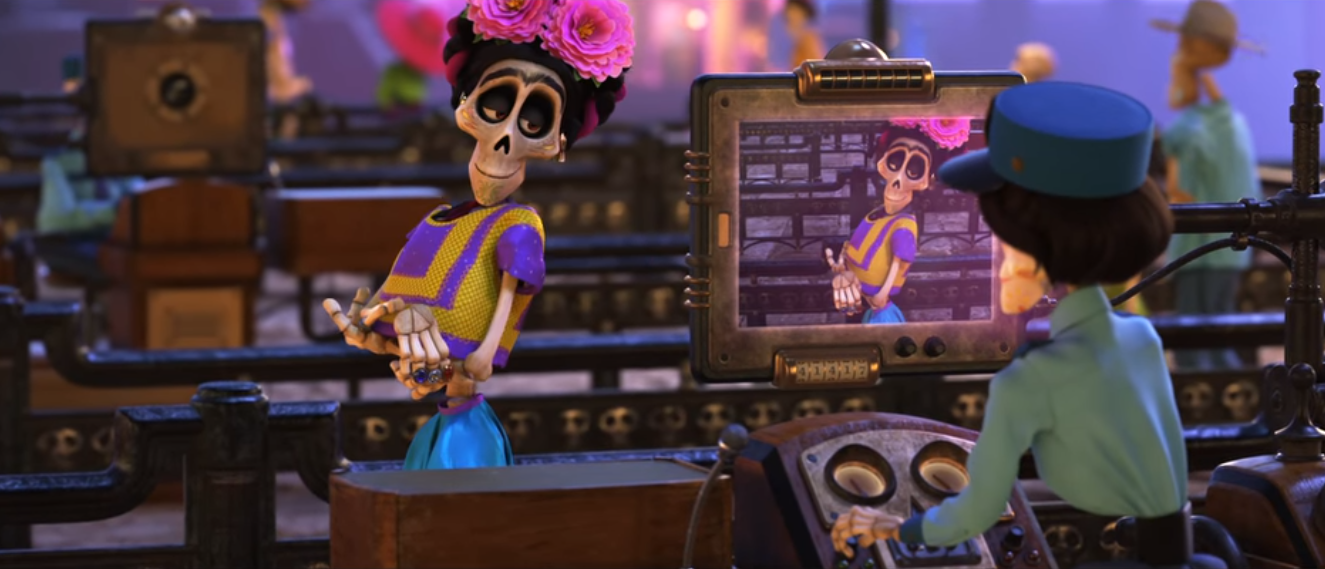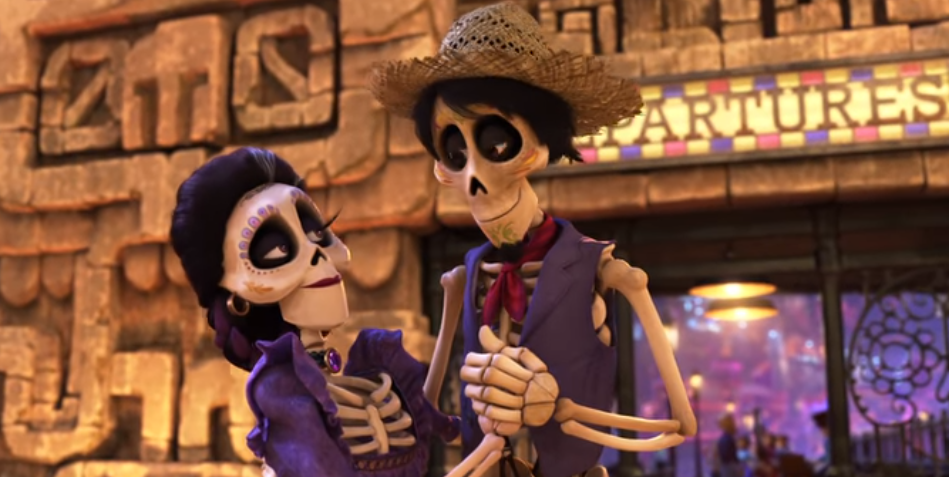The Day of the Dead was this past week, so even though I’m a little late, I felt it only right to make the second Animation Nation article about one of my new favorite films, Disney-Pixar’s Coco.
It’s only been in recent months that I’ve seen Coco. Yes, I know. I’m late. After a failed meet up for the movies and a span of booked weekends, I slowly resigned myself to the fact that I’d just have to wait until the film came out on DVD. Also, I was waiting until the hype surrounding the film died down so I could justly analyze it. I’ve been burned by hyped films before, such as A Wrinkle in Time, which is a downright mess. I didn’t want Coco, such an important film for Latinx representation, to be a big dud, even after hearing raving reviews. Like with A Wrinkle in Time, I was scared I would hate it. But after my sister, appalled I hadn’t seen it yet, turned on Netflix to make me watch it, I can happily say that Coco isn’t just merely good. It’s fantastic.
Of course, you, the Coco-viewing public, already knew this. I’m the one who’s late to the party, and I apologize.
With that tardiness comes the late realization that as much as I love how Mexican culture is handled in the film and the characters are quickly established and, I feel, fully realized.
I feel like most people’s favorite character might be our little protagonist, Miguel Rivera. He’s a sweet, courageous little boy who changes the trajectory of his family forever. He ranks highly among Pixar’s best characters. But my favorite character is another one who also should belong on that list of rarefied Pixar characters. His story is one that is a bait-and-switch as well one that is surprisingly mature and macabre for such a family-friendly film. He’s a character that, upon first glance, you don’t expect any emotional layers from him. But in fact, it turns out he’s the core of the entire narrative. That character is none other than Héctor Rivera.
Like most Coco watchers, I thought I was going to be mildly interested at best in Héctor. Since his official character description is, according to the Disney Wiki, “a charming trickster in the Land of the Dead,” I assumed he was going to be a mere sidekick. But boy was I wrong.
Most Pixar characters are rooted in adult sensibilities, such as Up‘s Carl Fredricksen, who suffers from existentialist depression after his wife dies. There’s also the toys from the Toy Story series,who must grapple with life changing their owners from imaginative children into adults who must care more about their bills and social lives than their toys’ feelings. But Héctor is a character who, I feel, might have one of the most intense storyline out of the Pixar pantheon main motivations are rooted in a sorrow that has only increased after his death.
In life, he was a musician who was murdered by his musical partner Ernesto de la Cruz for his songs. The same goal he had in life–to get back home to reunite with his daughter Coco–is one he desperately hopes to achieve in death, especially since Coco, now an old woman who is characterized as suffering from dementia, is forgetting him. If a deceased loved one is forgotten, then they disappear forever, suffering a “final death.” That’s not even counting the stack of cards Héctor already had stacked against him–after he left home with Ernesto, Imelda removed him from the family, leading him to be painted as a scoundrel, a deadbeat father who deserved to be left off of the family ofrenda each year.
His story is simple on the surface, but the more I think about it, the more complex it feels. If Pixar really wanted to go there, this film’s focus could have been told from Héctor’s adult point of view rather than Miguel’s childlike one. Héctor’s life–his marriage to Imelda, how he got tangled up in Ernesto’s dreams of becoming a star–are endlessly fascinating to me. If Pixar ever decided to create a division solely devoted to cranking out PG-13 films, I’d hope a Coco prequel focusing exclusively on Héctor would be their first project.
However, this is where my Film Critic Hat comes off and my Héctor groupie hat goes on. I just love Héctor. Let me specify, lest I be considered a necrophiliac–I love Héctor particularly when he’s alive. First of all, he’s voiced by Gael García Bernal, so the character already has a head start towards the level of animated heartthrob. On top of that, it’s García Bernal singing. That, combined with the guitar playing, instantly reminded me of Oscar Isaac strumming out his own theme song for Star Wars. Somehow, both actors can sound vulnerable, even while singing silly stuff like a Star Wars song or “Everyone Knows Juanita,” the song Héctor sings about a woman who, by most people’s definition would be ugly, but the song’s protagonist feels like she’s out of his league.
García Bernal’s vulnerability especially comes into play when Héctor sings “Remember Me,” the lullaby he wrote and sang to Coco. We can hear the song in its true form in García Bernal’s voice, which is soft and gentle as Héctor bids Coco goodbye. No longer is it a bombastic show tune, as it was in de la Cruz’s clutches. Instead, it becomes a sweet, tender song only meant to signify the bond between father and daughter.
Also, who doesn’t love a good dad who not only has a cute singing voice, but is also easy on the eyes? What’s so cool about living Héctor’s character design is that Pixar didn’t seek to make him into a standard “pretty boy.” Instead, his handsomeness comes from the sum of his parts rather than a bland, broad stroke of beauty. He’s a man who’s tall and lanky, has a big nose, a gold tooth, and big ears. Yet it all works to create a version of handsome that is a lot more intriguing and, in many ways, more alluring to look at than Ernesto de la Cruz’s stereotypically “handsome,” Buzz Lightyear-esque face.
Even as a skeleton, I love Héctor’s spirit and personality. For instance, I also love how doting of a father Héctor is in both life and death. The part of the ending scene where Héctor and his family return to the Land of the Living for Día de los Muertos is one of my favorite moments because we are allowed to see, once again, how loving a father Héctor is. If I didn’t already love Héctor as a hot dad, seeing him peck kisses all over the face of his aged daughter would have clinched the deal.
I also like how the film does reveal more sides to Héctor before we know the ultimate truth about his death. He doesn’t just remain a trickster; we see that he longs for family so much that he has created his own family with other lost souls. Together, they live in what looks like the slums of the Land of the Dead, calling each other aunt, uncle, or cousin. You can see with his interactions with his “tías” that he’s a loving, caring soul who might be a little cheeky, but always puts family first.
As a straight woman, I’m primarily looking at Héctor through straight lenses, but there’s also a lot about the character that can fit into a queer reading of the film. For instance, we’re introduced to Héctor while he’s in drag as Frida Kahlo in an attempt to cross to the Land of the Living. I’ve read elsewhere that in the novelization of the film, Héctor has also dressed up as Kahlo’s husband Diego Rivera, but it’s particularly interesting that the only drag moment we see from Héctor is when he’s dressed as a woman, and a queer woman at that.
Matthew J. Jones and Martín Vega Olmedo wrote for Musicology Now about Coco as an analogy for coming out and embracing your true identity. “Miguel’s plight constitutes a queer narrative framed as a specifically musical struggle,” the write, and a good chunk of their article relates how Miguel’s trip to the bright and colorful Land of the Dead, where Frida Kahlo and Héctor help Miguel come to terms with himself as a musician, is a couched way of showing the experience of finding your tribe. They write:
“Whereas Miguel felt queer in the Land of the Living, he finds support in the Land of the Dead; he even receives the appellation of ‘artist’ from Frida Kahlo. Her validation inspires Miguel to embrace his musical identity by singing a ‘coming out’ song, ‘Un Poco Loco,’ in the Plaza de la Cruz, an inverse of the Mariachi Plaza stage upon which he is forbidden to perform by his living family. Among the dead, Miguel finds the queer musical family he has searched for, exemplified above all by Hector Rivera, Miguel’s true great-great grandfather who first appears as Frida Kahlo in-drag. This cross-dressing ancestor helps to redirect Miguel’s fixation on the ultra-masculine De la Cruz towards a recognition of an even broader musical family that includes Mama Imelda, whose musical performance toward the movie’s finale helps to expose De la Cruz as a false diva.”
Of course, you could say that Héctor’s Kahlo moments are purely for an American audience. The gag of Héctor dressing up in costume to get to the other side might not have read as funny for Americans if he dressed up as Rivera, an artist that’s not visibly recognizable like Kahlo, onscreen. Dressing up as, say, Cantinflas, a male comedic actor known to Mexican audiences but not for American ones, wouldn’t have worked either across the board either. Even dressing up as another female Mexican icon like Dolores Del Rio, who found fame in Mexico and America, also wouldn’t have translated, since much of the American audience for Coco is comprised of kids and tweens who don’t know who Dolores Del Rio is. However, with the amount of blasphemous Kahlo merchandise out there, they definitely know about Kahlo.
Also, even though Coco focuses on Héctor’s relationship with Imelda, there’s a small contingent out there who see Héctor’s decision to run off with Ernesto as Héctor being unable to choose between his wife and the friend he may or may not have feelings for.
According to the official novelization, Héctor views Ernesto like a brother, but let’s take a look at the Imelda-Héctor-Ernesto triangle using Jones and Vega Olmedo’s linking of music with LGBTQ+ identity, with certain words italicized as context clues. Imelda clearly was ready to take up her societal role as a wife and mother, while Héctor wanted to be true to his musical nature. Between Imelda and Ernesto, Ernesto was the only one offering Héctor what he wanted. Even though Héctor had to die for that decision, he and Imelda finally embrace their artistic selves when they’re reunited in a world where they can be free.
As you can see, there’s a lot to like about Héctor. He’s such a fantastically-layered character and I believe he earns his status as one of the biggest surprises of 2017 in film. Now if we could just get a Pixar short about Héctor doing dad stuff with little Coco, I’d be happy.
